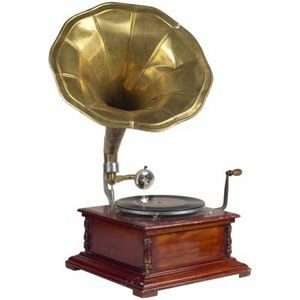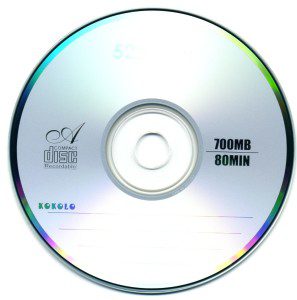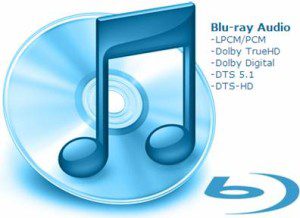The other day I noticed a posting on one of my favorite Facebook communities, All Things Music, Movies, and Home Theater. A regular contributor posted this Music Resolution Comparison Chart that shows all the various resolutions of digital audio from the lowest MP3 to the highest LPCM and DSD. One person’s comment really struck me as revealing, he asked “what does this mean?” The answer is pretty simple, as you go up in resolution, you can play back at higher SPL with absolute clarity, to the point where today we can hear a one-to-one copy of the original master recording at home.
 Since the dawn of recorded sound in 1876 by Thomas Edison till today, the recording arts and sciences have made steady improvements in the level of fidelity to the original source. Not surprisingly, the movie industry has been the main driver of progress over the years, theater sound systems were the largest and are still the test bed for all the technology that trickled down to the consumer level, from stereophonic sound in the 1930’s to digital surround sound in the 1990’s. In each generation, the hardware got better and so did the content, in a virtual race to outperform the other.
Since the dawn of recorded sound in 1876 by Thomas Edison till today, the recording arts and sciences have made steady improvements in the level of fidelity to the original source. Not surprisingly, the movie industry has been the main driver of progress over the years, theater sound systems were the largest and are still the test bed for all the technology that trickled down to the consumer level, from stereophonic sound in the 1930’s to digital surround sound in the 1990’s. In each generation, the hardware got better and so did the content, in a virtual race to outperform the other.
In the 1960’s and 70’s, we got stereophonic sound on vinyl albums, 12″ discs with 20 minutes of play time on each side, with bandwidth of 100 Hz to 16 KHz (corrected by RIAA EQ in phono stage) and dynamic range rated at 60 dB, about the same as MP3 today. The manufacturers of the hardware built speakers and amplifiers that could surpass these specs and maintained their lead, the hardware could outperform the software even with the audiophile albums of the day by Mobile Fidelity, Telarc, and others. This was known as the analog era, music was recorded on magnetic tape with its own limitations, the dynamic range being about 85 dB.
In the 1980’s the digital era began with the introduction of the CD. Bandwidth improved to 20 Hz to 20 KHz and the dynamic range improved to 90 dB from a 5″ single sided disc that could store 700 MB of data and play for 74 minutes. The hardware manufacturers went back to their labs to create speaker systems that could handle 30 dB more dynamic range and bigger power amps to drive those speakers to higher SPL than ever before for home systems. The digital content on the CD was converted to analog by a DAC inside the CD player, the content may be stored digitally but playback was and still is analog.
from a 5″ single sided disc that could store 700 MB of data and play for 74 minutes. The hardware manufacturers went back to their labs to create speaker systems that could handle 30 dB more dynamic range and bigger power amps to drive those speakers to higher SPL than ever before for home systems. The digital content on the CD was converted to analog by a DAC inside the CD player, the content may be stored digitally but playback was and still is analog.
In the meantime, the studios raced to create new soundtracks for their movies to bring greater realism into the movie theaters. Dolby Labs and DTS drove technology farther than ever before with the first digital theater sound systems, capable of handling the extreme dynamic range for the special effects in blockbusters from Spielberg and Lucas, Jurassic Park and Star Wars. The first Laserdiscs arrived with digital surround sound, the resolution being better than CD, with 5.1 discrete channels and up to 95 dB dynamic range but still not what we call hi res audio today.
This led to the demise of VHS tape and the rise of DVD, also a 5″ one-sided disc like the CD but capable of storing 4.9 Gigabytes of both audio and video content and reaching dynamic range of 100 dB. The new DVD format exceeded the performance of a CD but remained a movie playback medium while the CD remained the main source for recorded music.
 In the mid-2000’s Sony introduced then next generation of storage media called the Blu-ray disc, using the familiar 5″ single sided disc but able to store up to 50 Gigabytes of audio and video data, the need to compress the dynamics evaporated with this new technology. Now the studios and record labels could release movies and concerts on Blu-ray with up to 120 dB dynamic range and no bandwidth limiting, identical to the original master recordings. This breakthrough made it possible for consumers to hear 24 bit recording at the sample rate of up to 192K, although 96K was the standard adopted by most studios and labels.
In the mid-2000’s Sony introduced then next generation of storage media called the Blu-ray disc, using the familiar 5″ single sided disc but able to store up to 50 Gigabytes of audio and video data, the need to compress the dynamics evaporated with this new technology. Now the studios and record labels could release movies and concerts on Blu-ray with up to 120 dB dynamic range and no bandwidth limiting, identical to the original master recordings. This breakthrough made it possible for consumers to hear 24 bit recording at the sample rate of up to 192K, although 96K was the standard adopted by most studios and labels.
Hi Res Audio means resolution of at least 24 bits at sample rates of at least 96 KHz, available from either hi res download websites or on tangible SACD, DVD-A, and Blu-ray discs. The hardware manufacturers increased the power handling and dynamic capabilities of both their speakers and amplifiers by the mid-2000’s but not every system is capable of playing hi res audio up to its current specs. To do that you need a big system and the privacy to turn it up loud. If you can, and conform to the security protocols set by the studios and labels for a one-to-one copy of the original master recording, only accessible via HDMI with HDCP, you’ll have found the holy grail of high fidelity, the best content in history.


One reply on “What Does High Resolution Mean?“